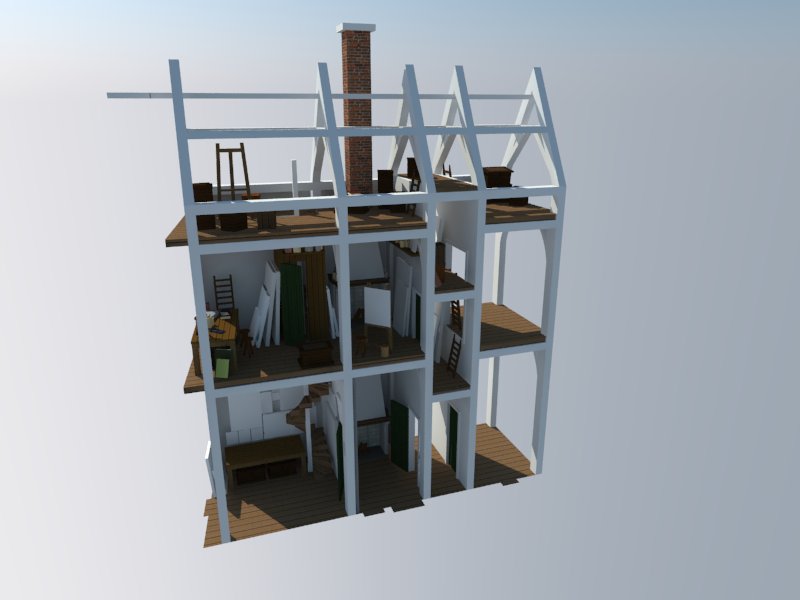Date: 1 September 2022
Time: 13.00-17.00 CEST
Venue: University of Amsterdam
Language: Dutch
One of the goals of the Amsterdam Time Machine is to populate the digital grayscale map of historical Amsterdam with 3D reconstructions of its buildings throughout time. Already now, several 3D models for different buildings and times have been developed by researchers, heritage professionals, and/or citizens with a passion for Amsterdam and its rich history. In order to make it possible to integrate all the existing and future 3D models into the Time Machine, it is essential that a clear workflow is developed, from the creation of the model to its publication.
During this data sprint (in collaboration with the 4D Research Lab), researchers with experience in 3D modelling of historical Amsterdam will share their methods and experiences in dealing with issues such as using and citing historical sources; how to deal with uncertainties in reconstructions; and how to publish models with solid accompanying documentation. Participants will also be invited to bring their own input and data to work on 3D models on the spot.
Programme
13.00-13.15: Welcome and introduction
13.15-16.15: Work on 3D models (in groups)
16.15-17.00: Short presentation of results per group
17.00: Drinks
More information on the programme will be made available soon on the event page (in Dutch).
You can already register at the event registration page.
About the Amsterdam Time Machine
The Amsterdam Time Machine (ATM) is a public research resource and infrastructure for the spatio-temporal exploration of historical Amsterdam. Inspired by the example of the Venice Time Machine, back in 2017 the researchers of the ‘Creative Amsterdam: An E-Humanities Perspective’ (CREATE) programme of the University of Amsterdam, under the lead of Julia Noordegraaf, started this initiative to develop a time machine for the city of Amsterdam.
To this end, a consortium with a large number of partners from the fields of research, heritage, and creative industries, as well as commercial partners, has been set up. The aim is to connect all digital data about the history of the city and its inhabitants and to link them to historical maps and 3D models. This way, persons, objects and events that have contributed to the history of Amsterdam can be investigated through the locations to which they are related. Data stored in the countless sources of Amsterdam’s heritage institutions becomes available for users in connection to the specific context to which they are connected.
